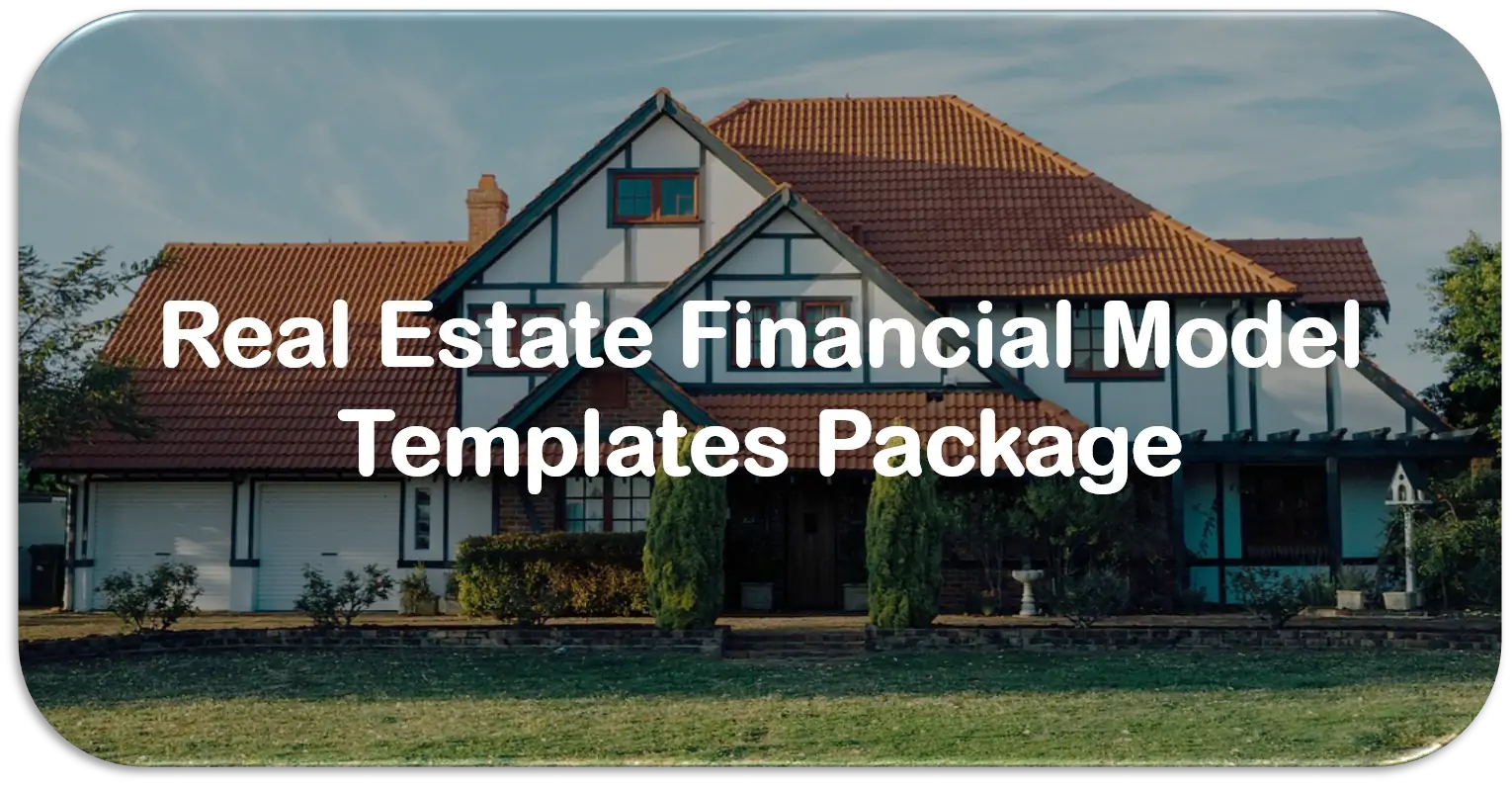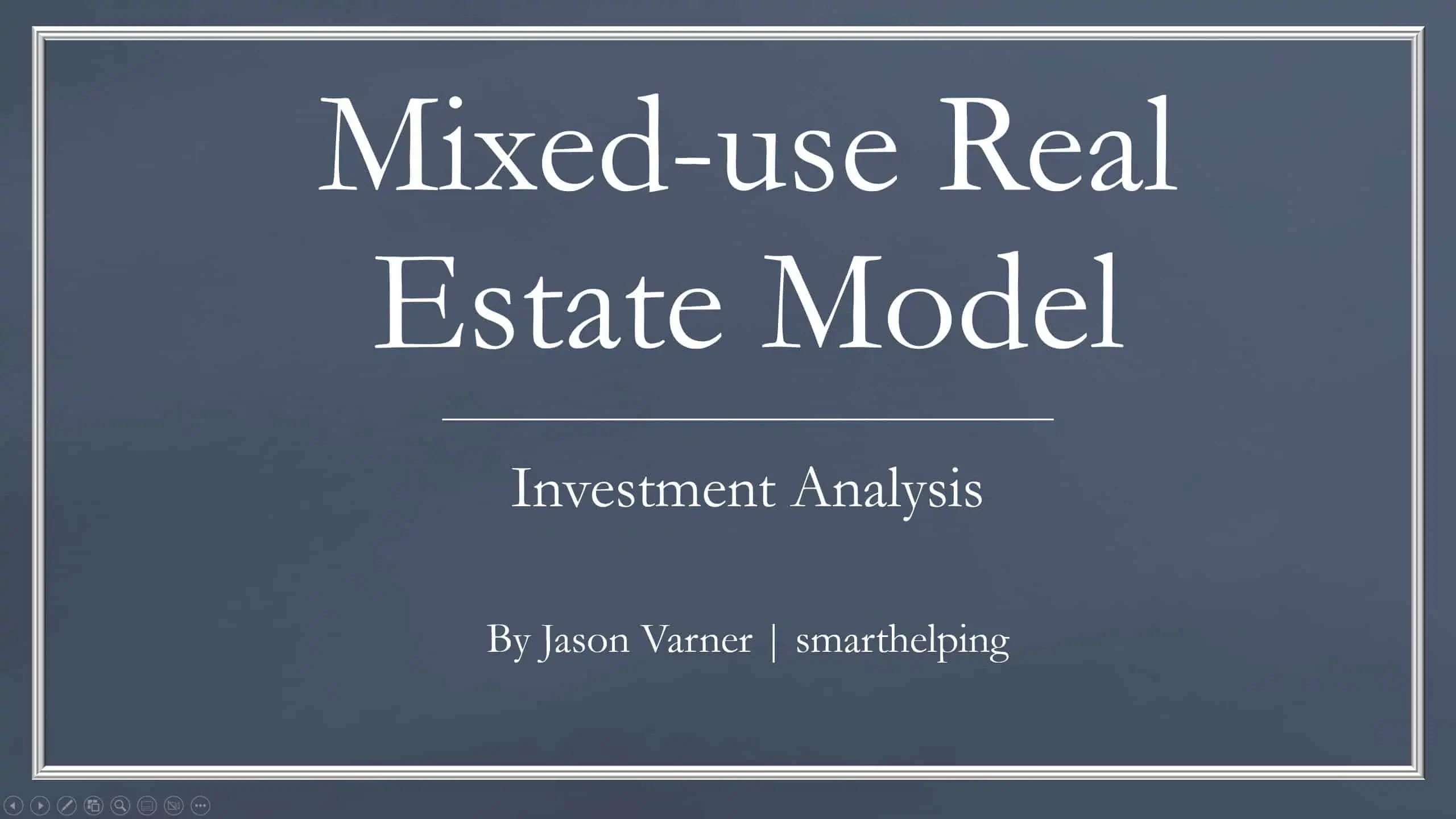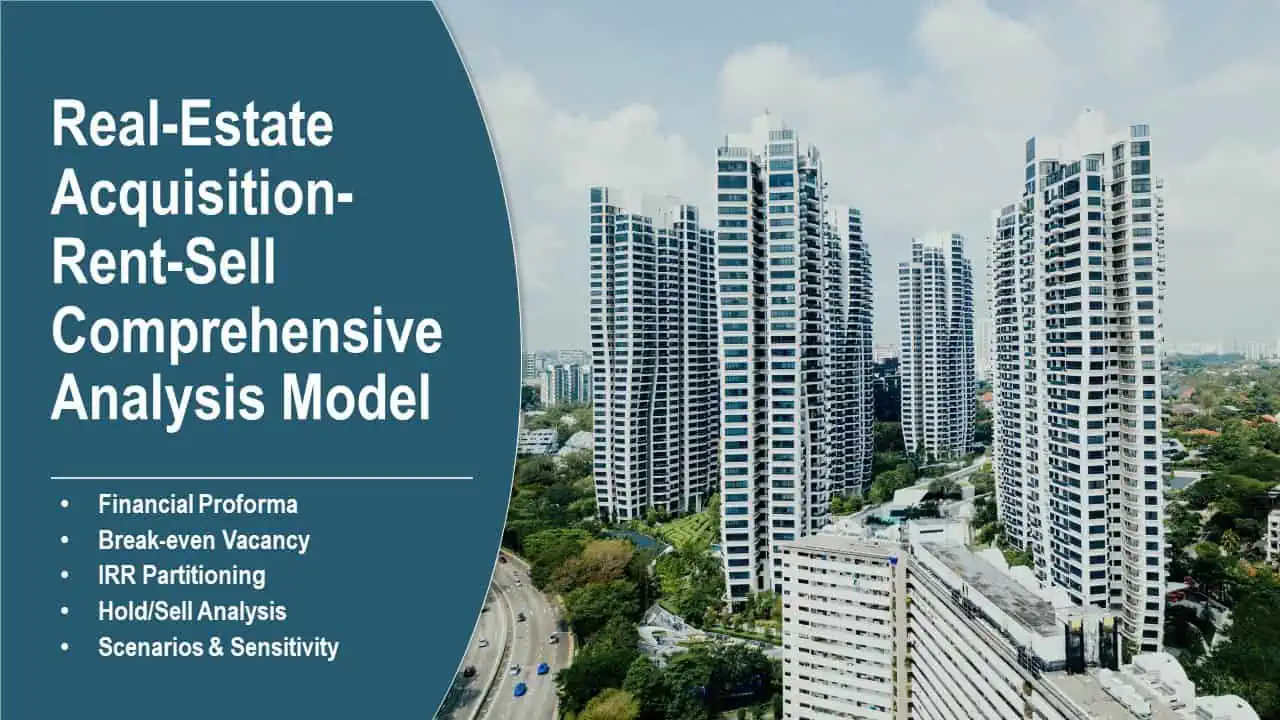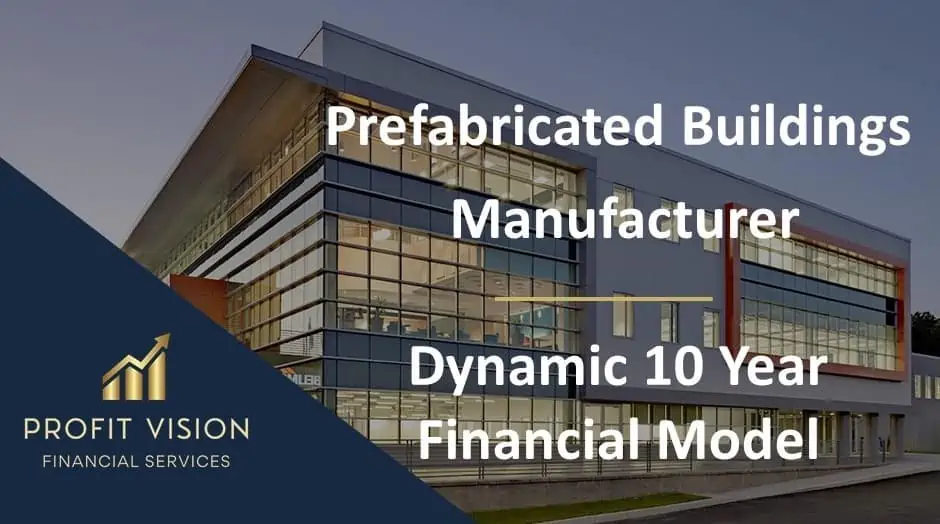10 Year Multi-family Real Estate Model – Options for Joint Venture and Refi
An easy-to-use real estate model with particular assumptions that come along with multi-family real estate acquisitions. Model up to four properties at once.

Video Tutorial:
Recently updated to handle up to four properties at once. Individual summaries and aggregate views are displayed for each and include a Discounted Cash Flow Analysis with Net Present Value (NPV).
This model has been designed to cater to a quick underwriting/review process when looking at the financials of a multi-family real estate deal. It involves assumptions that allow for a joint venture as well as the option to refinance in-between the acquisition and exit period. The proforma comes in a detailed sheet and rolls up into a clean executive summary view. The IRR hurdles flow through the waterfall tab cleanly so the sponsor and investor can see how the cash is split in each tier.
The model goes out for a max of 10 years.
You can choose the year when the refinance happens or mark that as ‘N/A’ if it is not applicable. The exit year can also be dynamic and will run off the exit cap rate defined.
The rent rolls allow for up to 5 different unit types but can be easily expanded to as many as you want. The only thing that flows out of that area is the grand totals.
The IRR hurdle logic is set up to account for up to 3 hurdles and then a final percentage split is defined after the last hurdle is reached.
You can define all your granular assumptions like rent/expense growth per year and costs per unit on the detailed pro forma tab. If you want to stick in a total annual starting rent and expense figure instead of going through all the detailed assumptions, there is a switch you can change in order to pull from that single input rather than the granular assumptions. This makes for a quicker review if needed.
There is a visual to show the annual cash flows that flow to the sponsor and investor.
If you don’t have a joint venture to model, that is fine and you can 0 out the sponsor assumptions and give 100% to the investor field. The investor field then becomes a proxy for the owner/operator.
There is a debt service coverage ratio each year that changes dynamically. Also, there are assumptions for any loan prepayment fees on the original loan and refinance loan as well as selling fees upon exit.
There is a sub-investor view to show what a smaller investment looks like for one entity that is part of the entire investor pool. Their cash flows will populate according to their share in the total pool.
The final IRR for both the sponsor and investor are shown as well as their equity multiple.
Similar Products
Other customers were also interested in...
Real Estate Financial Model Templates Package
This is a collection of ready-made Excel financial model templates for real estate businesses and it... Read more
Mixed-Use Real Estate Model: Leverage / JV Options
A general real estate model to plan all assumptions for up to 7 'uses' for a given property. Include... Read more
Real Estate Financial Model Bundle
This is a collection of financial model templates that provides the financial projections and valuat... Read more
Real Estate Acquisition-Rent-Sell Comprehensive An...
An integrated, dynamic and ready-to-use Real Estate Acquisition-Rent-Sell Comprehensive Analysis Mod... Read more
Real Estate Multi-Family Development Excel Model
Real Estate Financial Model to evaluate a development project, with Equity Waterfall and Advanced Sc... Read more
Condominium Development – Dynamic 10 Year Fi...
A condominium (or condo for short) is a building structure divided into several units that are each ... Read more
Construction / Development Financial Model
Development & Construction Model presents the case where a property with multiple residential un... Read more
Multi – Unit Condos Model Template
Multi-Unit Condos Model presents the business case where a property with multiple residential units ... Read more
Prefabricated Buildings Manufacturer – Dynam...
Financial model presenting a development scenario for a Prefabricated Buildings Factory including co... Read more
Single Tenant Net Lease (NNN) – Investment &...
Single-tenant property is a property that is fully occupied by a single user. Single-tenant properti... Read more
You must log in to submit a review.





























